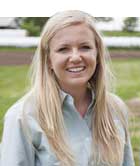
Some years things just don’t go according to how they get drawn up in the pasture playbook.
That was the case in Arkansas where the fall was not favorable for generating fall and winter pasture growth. As a result, producing good-quality pasture this spring is even more important to many producers in that region.
According to John Jennings, University of Arkansas extension forage specialist, several winter annual forages can be planted in winter or spring and provide forage during the spring. Cleaning up the field first will help get the most from the forage, notes Jennings in Arkansas’ Dairy E-News.
If planting into an existing bermudagrass sod, spray it with glyphosate in February to kill winter annual weeds, including buttercup and little barley. Spraying winter annual weeds promotes earlier bermudagrass growth where no winter annual will be planted. Heavy winter weed infestations may delay bermudagrass growth three to four weeks.
Cereal rye or annual ryegrass are normally planted in the fall but can be planted in late winter or early spring for emergency forage. Jennings recommends planting a cold-hardy ryegrass variety in late February to mid-March; then apply 50 to 60 pounds of actual nitrogen (N) per acre to promote growth.
Plant spring oats or brassicas in early March to provide spring grazing. Jennings notes that the oat variety “Jerry” is the most common spring oat choice in his region. He recommends a planting rate of 100 pounds per acre.
Forage brassicas include forage turnips, forage rape, and hybrids of the two species. Drill these at 5 pounds per acre if planted alone or at 2 pounds per acre if mixed with oats or ryegrass. Apply 50 to 60 pounds of actual N per acre with phosphorus (P) and potassium (K) based on soil test recommendation.
Jennings also suggests promoting volunteer ryegrass, which has the potential to produce substantial spring pasture. To help ensure early grazing, apply 50 to 60 pounds of actual N fertilizer per acre by mid-February. Apply P and K according to soil test; however, if no test is available, apply 300 pounds of 17-17-17 per acre to supply the basic nutrients. If the latter approach is taken, soil test the field before applying the fertilizer and make any adjustments once the results are known.
Ryegrass will experience the most significant growth in April but will continue growing into May. Jennings shares that two producers who used this strategy in February 2016 had nearly 2,000 pounds of dry matter per acre by mid-March.
Fertilizing fescue in mid-February can promote early grazing and eliminate the last few weeks of hay feeding in March. Jennings notes that Kentucky 31 fescue can provide needed forage before other summer forages are available, though the toxic endophyte fungus may hinder livestock performance.
Overseeding other fescue acres with red or white clover will help dilute the toxic fescue effect and improve pasture quality. Fields to be sown with clover should have a pH over 6.0 and medium or higher P and K soil test levels to support good clover growth.

Sydney Sleep was the 2016 Hay & Forage Grower summer editorial intern and is a junior at South Dakota University.

